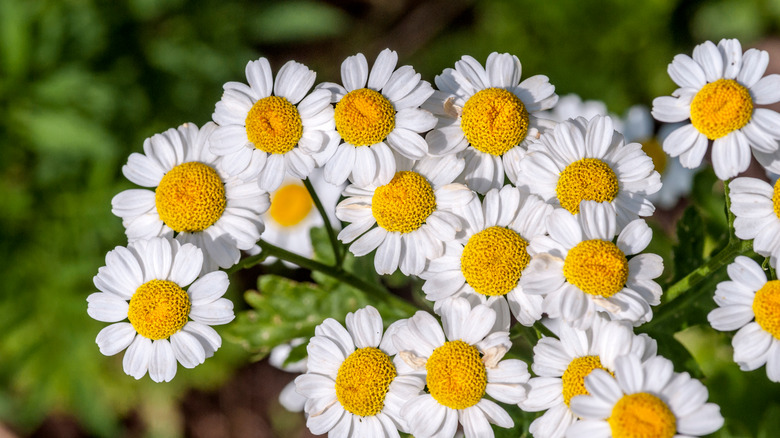
If insects are turning your garden into their playground, feverfew can be a natural solution. Sure, the science world is still piecing together the full picture, but there’s still enough evidence to suggest it has natural insect-repelling properties. Take, for instance, a 2010 study published in Industrial Crops and Products. Researchers put feverfew to the test against the African cotton leafworm, a notorious pest. What they found was intriguing: the plant’s ability to fend off these insects was closely linked to its terpenoid content. Now, terpenoids are fascinating compounds primarily responsible for the aromatic qualities of many plants. Interestingly, these compounds are also known for their biological activities, including acting as natural insect repellents. This research went a step further, discovering that certain extracts of feverfew, particularly those obtained using CO2 and modified with acetone, were more effective in deterring pests than using the plant’s essential oil alone.
Another 2021 study published in the Bulletin of Entomological Research shed more light on feverfew’s potential. This time, the focus was on the Colorado potato beetle, a pest well known for resisting chemical insecticides. The findings? Feverfew’s essential oils were particularly effective, showing more potency against the larvae than the adult beetles. So, why not give feverfew a try? Beyond its pest-deterring capabilities, it’s a plant that can add a touch of charm to any garden. And who knows? With its blend of beauty and functionality, it might just turn your garden into a pest-free oasis.
Exploring the charm of feverfew in your garden

Feverfew, scientifically known as Tanacetum parthenium, is a modest yet captivating perennial hailing from the Balkan Peninsula and Western Asia. Now, don’t let its delicate appearance fool you. Feverfew is a hardy plant. It can withstand various weather conditions, making it a reliable choice for gardeners. Its ability to flourish without needing too much attention is a bonus, especially if you don’t want countless hours to spend on upkeep. This plant, reaching about a meter in height, emerges from July to October, flaunting daisy-like flowers that can turn any garden corner into a picturesque spot. As for its aroma, it’s strong and somewhat bitter, which adds another layer of character to your garden, setting it apart from the usual floral fragrances. It is this fragrance that makes it the perfect plant to ward off insects.
To effectively utilize feverfew as a natural insect deterrent, you should strategically place it in areas where you spend a lot of time outdoors or where insects are a particular nuisance. Ideal spots include around patios, decks, and along walkways. Planting feverfew near windows or doors can also be beneficial, as the scent helps deter insects from entering your home. Moreover, incorporating feverfew into your garden beds or borders alongside other plants can provide a protective barrier, reducing the likelihood of pests attacking your other plants. Its presence can be particularly helpful in vegetable gardens or near fruit-bearing plants, where insects often pose a significant problem.
Growing feverfew: tips for a thriving plant

When planting the seeds, timing is key: aim to plant them before the last frost date in your area, around a couple of weeks prior. This is perfect for giving your feverfew a head start before the outdoor growing season kicks in. Once the seeds sprout, you’ll know you’re on the right track, but keep in mind that it’ll take around two weeks for the seeds to start germinating. Also, feverfew loves a slightly acidic pH of around 6.0 to 6.7 and does better in well-drained soil. And when it comes to light, the plant isn’t too fussy. Full sun or partial shade — either work.
Now, if you live in a cooler climate, here’s some good news. Feverfew really knows how to handle the cold. Officially, it’s best for zone five, but you’ll be surprised to hear that it can tough it out in zone four as well. And if you’re in zone three, add a mulch cover for the winter, and your feverfew should be just fine. Watering is pretty straightforward, too. Keep the soil moist, especially in the early days. Aim to water your plant every two days in the early days to help your plant settle in and start growing strong. During its first year, it’s also wise to nip those budding flowers off to encourage the plant to focus more on leaf growth. But try not to take off more than a third of the plant at once.



